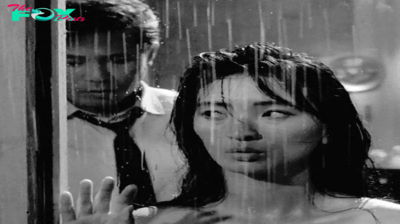Entertainment
What a privilege in addition to utter pleasure to be current for Esther from Solomon’s Knot – Seen and Heard Worldwide
 United Kingdom Handel, Esther HWV50a (c.1718): Soloists, Baroque ensemble, Solomon’s Knot (creative director: Jonathan Sells). Wigmore Corridor, London, 27.5.2024. (AK)
United Kingdom Handel, Esther HWV50a (c.1718): Soloists, Baroque ensemble, Solomon’s Knot (creative director: Jonathan Sells). Wigmore Corridor, London, 27.5.2024. (AK)

Clare Lloyd-Griffiths soprano (as Israelite boy)
Zoë Brookshaw soprano (as Esther)
James Corridor alto (as Priest of the Israelites)
Kate Symonds-Pleasure alto (as Priest of the Israelites)
David de Winter tenor (as Habdonah, Officer, Second Israelite)
Joseph Doody tenor (as Mordecai)
Thomas Herford tenor (as First Israelite)
Xavier Hetherington tenor (as Ahasuerus)
Alex Ashworth bass (as Haman)
Jonathan Sells bass
Composed as a small-scale masque for the Duke of Chandos in c.1718, Handel’s Esther may need been supposed to be carried out solely as soon as for the Duke’s non-public leisure at his nation residence ‘Cannons’ (Stanmore, Middlesex). Nevertheless, Esther outgrew the doubtless authentic intention. It was revised in 1720 (nonetheless for Cannons) after which, in 1732, Bernard Gates (Grasp of the Youngsters of the Chapel Royal) offered performances of Esther together with his boys for the Philharmonic Society.
Nonetheless in 1732, Handel was spurred on and made additional revisions, including extensions from a few of his earlier works. By this time, Handel may need had his Italian operatic soloists (comparable to Senestino and Maria Strada) in thoughts for the roles. Nonetheless, Esther was not considered an opera; with its English textual content it has created a brand new style: the English oratorio.
The textual content of Esther is assumed to be based mostly on Racine’s 1689 play of the identical identify. Nevertheless, the biblical E book of Esther may additionally have been a doable supply for Handel’s unknown librettist (or librettists). Both means, Jewish custom retells the story yearly on the Purim celebrations.
As instructed in The E book of Esther, Esther is a Jewish girl residing within the Persian diaspora and, having discovered favour with the Persian king Ahasuerus, she turns into the queen. Excessive-ranking Persian courtroom official Haman needs to destroy all Jews within the Persian empire. Nevertheless, Esther pleads with the king whose love for Esther results in saving the Jews and destroying Haman.
A lot as I’ll benefit from the fruits of Haman’s fall at Purim celebrations – together with the scrumptious hamantaschen pastry and enjoyable video games – in our present occasions I really feel uncomfortable with the biblical textual content in addition to with a few of the libretto. Superb choruses celebrating destruction, on whichever facet, sit uneasy with me. Apparently, Handel may need been conflicted together with his sympathies. For Haman’s remaining look (‘How artwork thou fall’n’) Handel offers a deeply shifting aria. With the attractive music given to him by Handel, bass Alex Ashworth was extra dignified than vicious as Haman however his very good singing served us completely.
The supply of Esther was a Solomon’s Knot masterclass in musicianship and scholarship, mixed with significant dramaturgy and utmost magnificence. Every of the ten singers and seventeen instrumentalists actually pay attention to one another; they carry out with out a conductor, however – or maybe due to it? – their ensemble work is immaculate and flawless. Clearly, all of them know Handel’s rating, not solely their very own components. Nonetheless, as in all conditions, it’s the prime which determines high quality: creative director (and ensemble member) Jonathan Sells’s achievement is a marvel to behold.
Every of the ten singers have solo components however in addition they represent the choir. They sing from reminiscence all through, though – in contrast to on operatic levels – they’re concerned throughout many of the efficiency. Their involvement even contains discretely shifting chairs and music stands (for instrumentalists) at related factors.
It isn’t straightforward to accommodate as much as twenty-seven individuals on the small stage of the Wigmore Corridor however Solomon’s Knot managed with none hindrance. It’s true that for ‘Save us, O Lord’ (finale of Act II, Scene One) the refrain cut up and sang from the auditorium proper subsequent to every facet of the stage, thus skilfully extending it. Nevertheless, it’s outstanding that your complete ensemble sounded unified though positioned in far from one another and, as all through, with out a conductor.
As a part of the musical dramaturgy, instrumental solos of no matter size weren’t solely heard but in addition seen. For longer solos related instrumentalists got here centre stage however changes have been additionally made for shorter solos. As an example, in the course of the Overture, oboist Daniel Lanthier stood entrance left on the stage, barely masking lead violin George Clifford. Nevertheless, whereas the lead violin repeated solo phrases of the oboe, the oboist stepped additional to the facet to make the violinist seen and extra audible.
At occasions, instrumentalists additionally carried out from reminiscence. In ‘Tune your harps’ (Act I, Scene Two), tenor Thomas Herford and oboist Lanthier have been centre stage, each acting from reminiscence, their duet above the pizzicato accompaniment offering a gorgeous musical dialogue. Virtuosity added to musicality was additionally in abundance: tenor Xavier Hetherington’s duo with lead violinist Clifford (‘How can I keep’, Act II, Scene Two) is only one instance.
Though formally an oratorio, on this efficiency of Esther we had credible appearing on the stage. All 4 essential characters offered full dramatic supply. Esther’s costume and hair broach have been regal in addition to tasteful; her voice of innocence chimed with Handel’s possible intentions (if, as assumed, the half was written for a boy soprano). The interplay between Esther (soprano Zoë Brookshaw) and Mordecai (tenor Joseph Doody) was dramatically absolutely believable.
A pleasant contact was for King Ahasuerus (tenor Xavier Hetherington) to supply a chair to Esther and subsequently each have been sitting collectively throughout his magical pianissimo return of the A piece of his aria (‘O beauteous Queen’, Act II, Scene Two).
Every of the ten vocal soloists did greater than justice to Handel. For me their most astonishing accomplishment was the dynamic and tonal vary of their choral numbers and their crystal-clear polyphonic supply. Their remaining quantity (consisting of 11 polyphonic traces: 5 choral and 6 orchestral) stuffed the Wigmore Corridor with essentially the most radiant ensemble possible, regardless of performing with none conductor. With Fruzsi Hara’s jubilant trumPet fanfare on the highest of the mesmerising ensemble, we witnessed a triumph of information, dedication, and wonder. It was a privilege in addition to utter pleasure to be current.
Agnes Kory
-

 Entertainment2h ago
Entertainment2h agoA Look at the Dating History and Rumoured Relationships of BIGBANG Star G-Dragon
-

 Entertainment10h ago
Entertainment10h agoMike and Lauren Sorrentino Introduce Baby No. 3 to Kids in ‘Jersey Shore’ Exclusive Clip
-

 Entertainment14h ago
Entertainment14h agoNatasha Rothwell on Her Memorable Firsts
-

 Entertainment19h ago
Entertainment19h agoFace Me and Other Korean Medical Crime Shows That are Must Watch
-

 Entertainment1d ago
Entertainment1d agoClassic Korean Movies Like Piagol to Add to Your Watch List
-

 Entertainment1d ago
Entertainment1d agoOver 60 Million People Tuned in to Watch Jake Paul vs. Mike Tyson
-

 Entertainment1d ago
Entertainment1d agoPopular Hudson Valley Italian Restaurant Addresses Closing Rumors
-

 Entertainment1d ago
Entertainment1d agoRHOBH’s Dorit Kemsley Addresses Viral Smoking Scene on Season 14 Premiere: ‘I Was Being Chased’



















